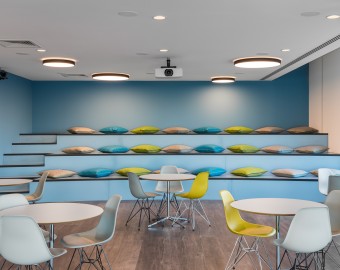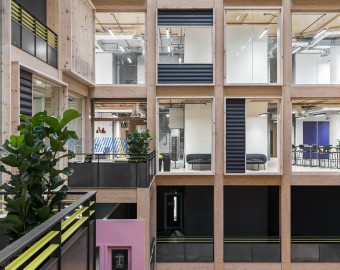Why Are We So Distracted In The Workplace?
Issue
Many people are overwhelmed by distractions in the workplace and their inability to focus negatively affects their productivity, engagement, wellbeing and overall performance. As demands on attention grow, it’s common for people to feel pressured to work harder at staying focused. Continuous partial attention and multitasking are common but inefficient coping mechanisms.
The facts
- How frequently the average worker is interrupted or distracted - 3 minutes
- How long it takes to return to a task after being interrupted - 23 minutes
- Average number of times a worker checks their inbox per hour – 30 times
- How often the average user in the UK checks their phone every day – 221 times
Insight
Neuroscience research has proven that focused attention is hard work. Because the brain has finite energy capacity, it’s physiologically impossible for anyone to engage in a full workday of controlled attention and meet any reasonable expectations for quality or quantity outputs.
Taking time out for regeneration, inspiration and physical activity is essential for optimal brain perfor-mance.
The facts
The brain is 2% of your body weight and uses 20% of your calorie intake.
Research shows that multitasking increases your error rate by 50%.
Movement engages the brain by stimulating the production of the protein BDNF (brain-derived neurotrophic factor), described as “Miracle-Gro for the brain,” fuelling the birth of new neurons.
Action
By understanding how brains work, people can become more mindful about how thoughts, emotions and behaviours are formed. Based on these insights, workplaces can be designed as hardworking tools to help manage attention in brain-friendly ways, recognising the range of peaks and valleys in mental performance that workers experience throughout the day.
How can the workplace be designed to support and enhance people’s brain functions instead of impair them?
It’s essential to offer choices that increase workers’ control of the stimuli around them. When workplaces are designed as an ecosystem of differentiated zones and settings, workers can appropriately select spaces that match their brain modes and activities as they move through their day.
There is no such thing as a consistent or predictable day. The workday journey includes a range of activities, tasks and brain modes.
Brain Modes
FOCUS – Deep focus requires avoiding unwelcome external and internal distractions.
REGENERATION & INSPIRATION – Easy access to colleagues, nourishment and places to rest the mind helps cognitively overwhelmed workers gain a new perspective.
ACTIVATION - Physical activity has proven to stimulate the brain. Provide easily accessible settings that encourage workers to move throughout the workday to activate their minds and also take care of their bodies.
By Carol Chinn (Source: Steelcase 360 magazine)
Contact us
If you would like to discuss elements of our article and how we can assist with your project, you can contact us on 01223 656111 or email info@theworkspaceconsultants.com.




